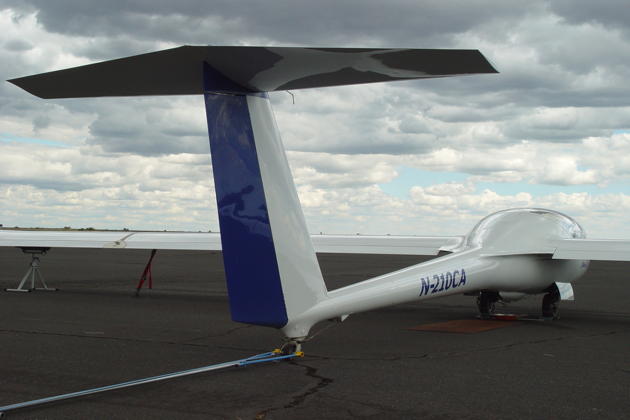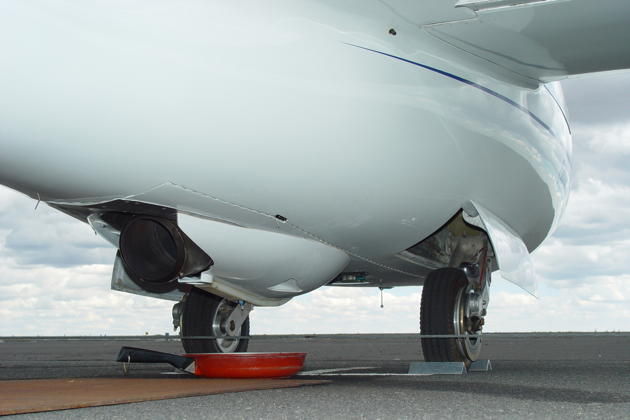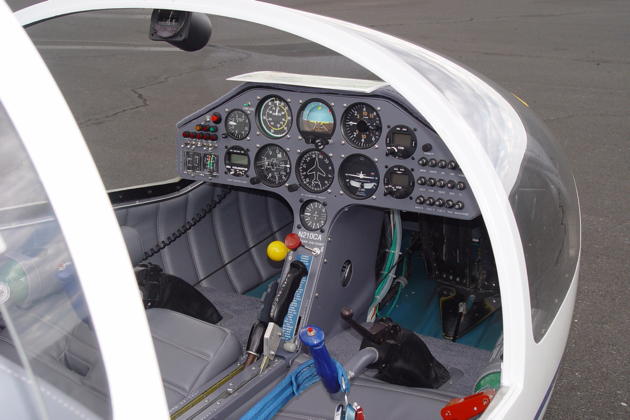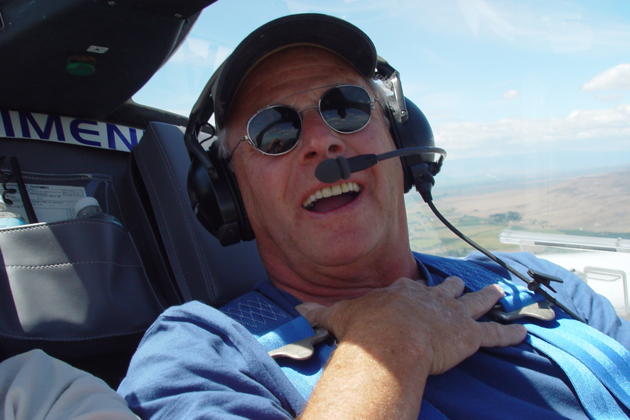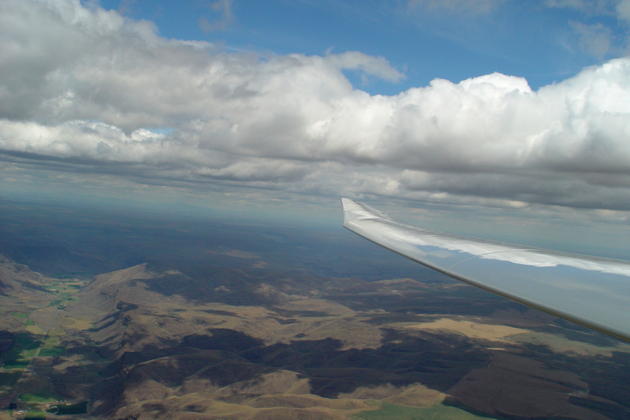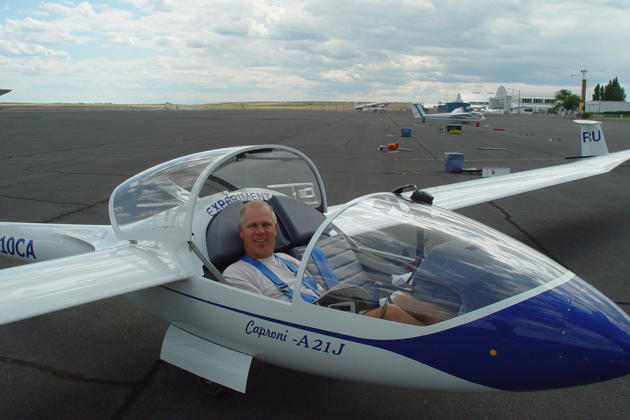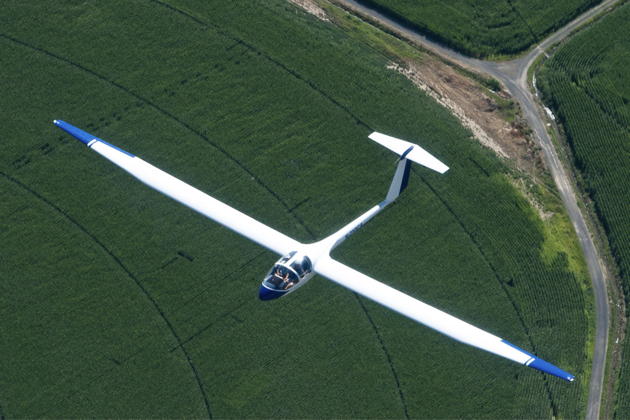FlightLog Archive
∟Aircraft Flown
Flying the Jet Caproni - Jun 2005
One of the trends in sailplane development for the past couple of decades has been an increase in self-launch capability, with significant numbers of motor-gliders now part of the worldwide fleet.
In the 1970's, Caproni developed the open class A-21 sailplane, which featured a relatively large side-by-side cockpit, and also a self-launch model, the A-21J, with a small jet engine for launch and cruise.
Caproni produced the first A-21 in Italy in 1970, and within two years had collected four world multi-place sailplane speed and distance records with it. A 2-place all-metal ship with a fiberglass forward fuselage, the A-21 was followed into production by the slightly improved S model. The ship features a roomy side-by-side cockpit and widely spaced retractable twin main landing gear. The T-tail is all-moving. The jet powered A-21J has self-launch capability and a service ceiling of 36,000 ft.
Dave 'Hammer' Harris and I had met a few times before, first in discussions about his beautiful BD-5J, which he flew for air shows and as a target for military fighters. When Dave mentioned that he'd have his custom Caproni A-21J in Ephrata in June, I looked forward to the opportunity to check it out.
Dave is an outstanding aviation craftsman, and he felt the jet engine installation in the original Caproni A-21Js left something to be desired. He designed, fabricated and built his own custom jet engine installation in his A-21J, and the result is a work of art.
The side-by-side seating arrangement is surprisingly roomy, and the cockpit switchology is clean and well arranged. Dave engineered a very simple start system, using a small auxiliary power unit on the ground. We started the jet engine with a small metal plate located under the exhaust, to avoid scorching the Ephrata ramp area. We quickly taxied to the concrete end of the Ephrata glider launch ramp, and pushed it up for a nice rapid acceleration to takeoff speed. Even though the small jet only puts out about 200 pounds of thrust, we quickly established a 1500 FPM climb rate and blasted out of the local area.
Quickly reaching 3000 feet AGL, Dave throttled back to idle to let the engine cool, and we started looking for lift under some inviting cumulus. I started to get a feel for the aileron and elevator forces, anticipating somewhat heavy ailerons and a touchy elevator. My anticipation of the '70's open class' feel was right on. Compared to many of the modern high performance sailplanes, the Caproni has quite heavy aileron forces, with attention needed to get and maintain a centered yawstring. The pitch sensitivity was also high, due to the all-moving tail. Once I centered a few thermals and began climbing, however, the Caproni and I settled down well.
Nearing cloudbase, Dave and I decided to head west to Wenatchee, and I handed over the flight controls as Dave demonstrated the cruise flap settings. This open class bird really shines with the cruise flaps. I really felt like we had lit the jet engine again - we smoked west in a hurry! Our goal of the Mt. Stewart area began overdeveloping with rain, so we turned at Wenatchee and smoked back at cloudbase past Moses Coulee and the along the Beezley Hills area, continuing past Ephrata to Wilson Creek and Odessa. After over an hour in the bird, I now felt comfortable with the pitch sensitivity and the required aileron forces.
As we turned west to head back to Ephrata, Dave decided to take over for a moment and push it up. With no effort, he cranked up the jet engine in-flight for a few minutes and we smoked back to Ephrata at 100 knots plus, then shut the engine down and lowered the dual main landing gear for a normal sailplane approach and landing. Dave warned me that our flare and touchdown might appear as if we were gear up, since the bird does sit low on the ground, but after a smooth approach and touchdown, all I had was a big grin on my face.
The Caproni A-21J is an amazing sailplane. Most glider pilots long for the freedom of a self-launching sailplane, but when you add the 'sound of freedom' of a jet engine, and the impressive launch, climb and cruise capability it affords, you definitely know you've moved up a level.
Now 'Hammer' wants to look into installing a custom jet engine in Lynn Weller's DG-1000...
Epilog
Dave Harris passed away on February 4, 2025. Cruise smooth and fast, Hammer!
 KASPRZYK
KASPRZYK